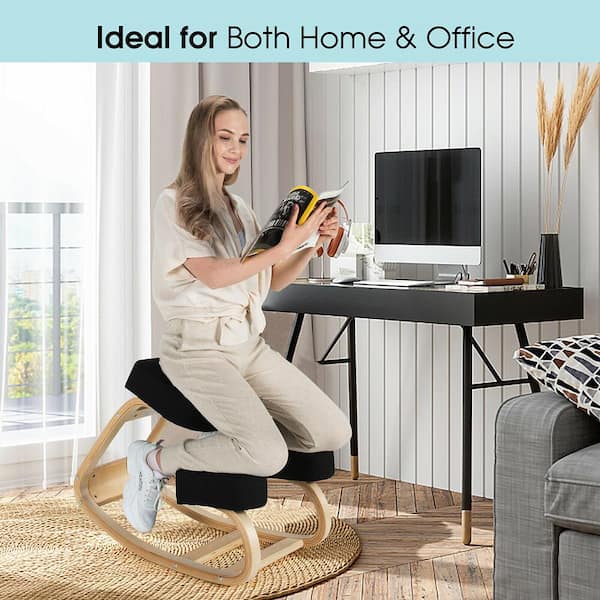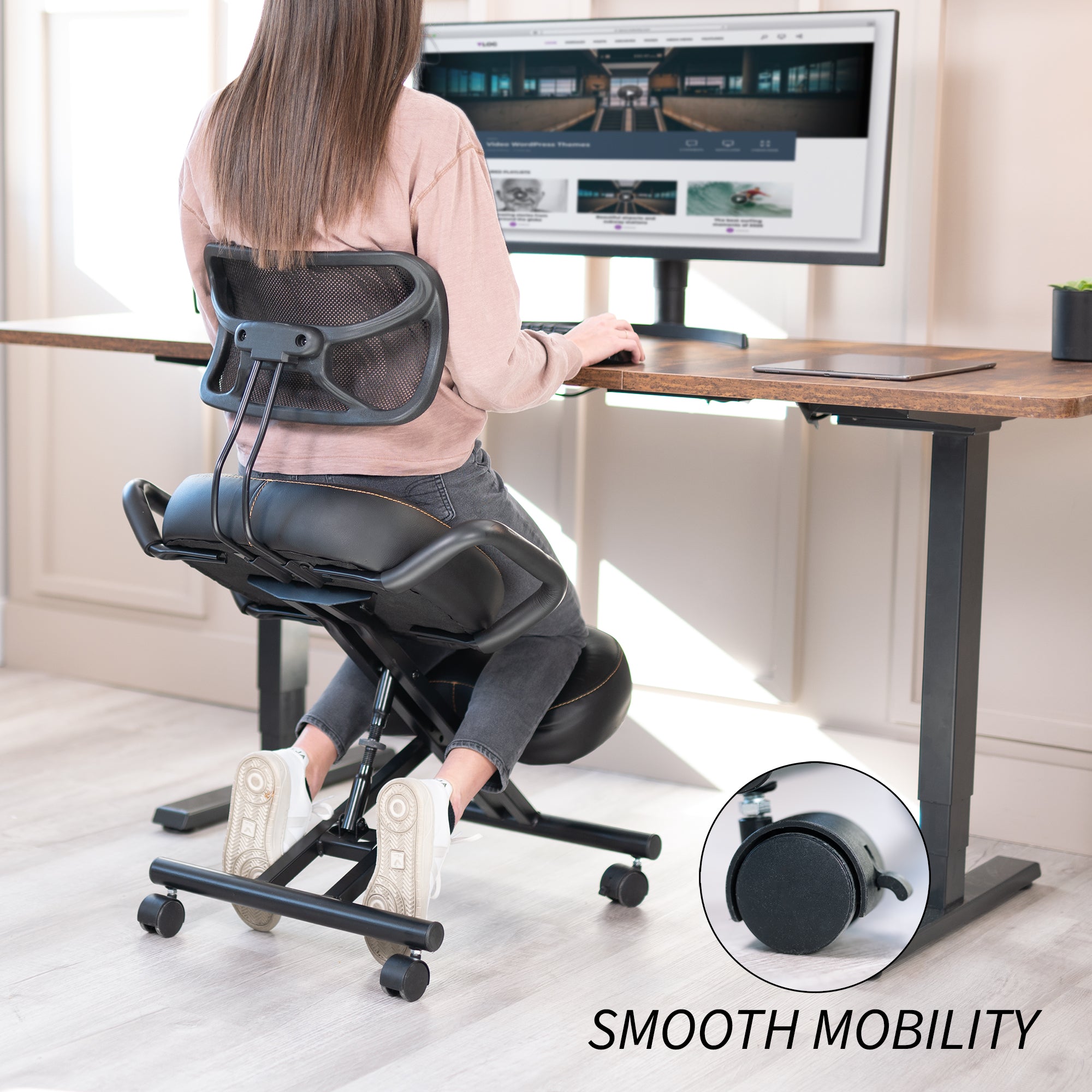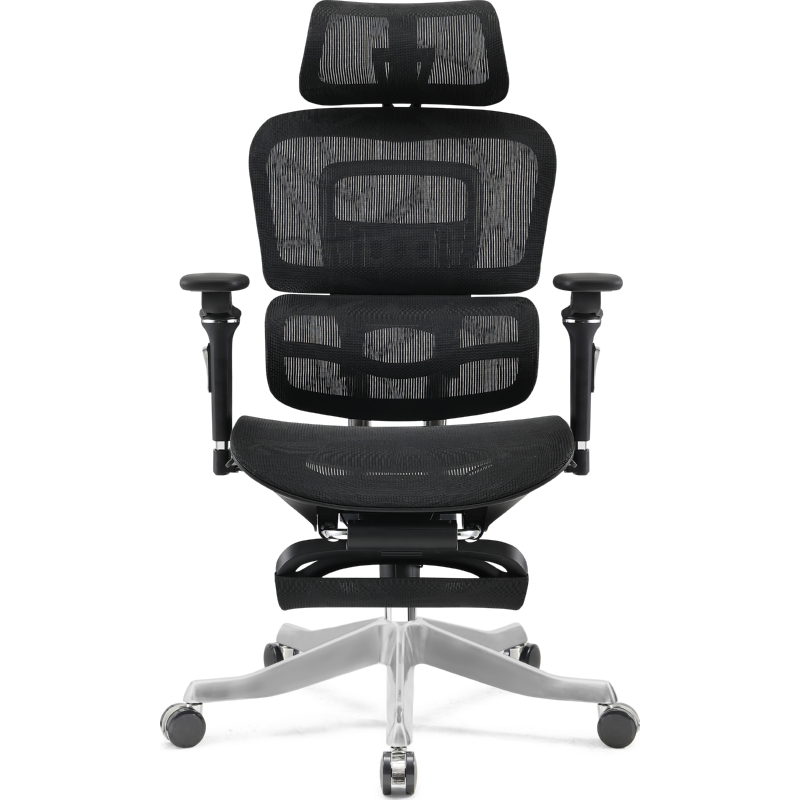An Ergonomic Office Chair can enhance your overall work performance
Wiki Article
Discover the Crucial Features of an Ergonomic Office Chair That You Must Consider
Choosing the best ergonomic office chair is crucial for anybody costs lengthy hours at a workdesk. Trick functions such as flexible seat elevation, back assistance, and armrest adjustability can greatly affect comfort and pose. Comprehending the relevance of seat depth and material quality additionally plays an essential duty in general contentment. Nevertheless, several forget various other vital elements. What extra elements should be thought about to guarantee peak efficiency and well-being in the office?Adjustable Seat Height
When picking an ergonomic workplace chair, adjustable seat elevation is a crucial function that significantly enhances convenience and usability. This particular enables customers to personalize the chair's height to their private needs, making certain that their feet remainder level on the flooring while their knees continue to be at a 90-degree angle. Appropriate seat height adds to perfect stance, lowering stress on the legs and reduced back throughout expanded periods of resting.
Furthermore, flexible seat height suits a varied range of physique and desk configurations, making it a functional choice for both home and workplace setups. The simplicity of modification usually includes a straightforward lever device, allowing users to change the height with very little initiative. This feature is specifically useful in common workspaces, where several individuals may make use of the same chair. Ultimately, buying an ergonomic office chair with adjustable seat height is essential for promoting total health and productivity in the work environment.
Lumbar Assistance
Back assistance is a necessary attribute in ergonomic office chairs, as it helps keep the all-natural contour of the spine and decreases the threat of pain in the back. Adjustable lumbar support enables individuals to tailor the degree of assistance according to their individual requirements, advertising far better stance throughout the day. This versatility not just boosts comfort but likewise contributes to general efficiency and health.Significance of Lumbar Support
Proper lumbar support is crucial for keeping a healthy and balanced pose throughout lengthy hours of resting - Ergonomic Office Chair. The back region of the spinal column is naturally curved, and without appropriate assistance, this curve can flatten, causing discomfort and stress. Insufficient lumbar support can result in a variety of concerns, consisting of lower back discomfort, muscular tissue exhaustion, and reduced efficiency. When a workplace chair offers proper lumbar assistance, it helps to line up the spine, reducing the chance of creating bone and joint conditions. This support urges the customer to rest back in the chair, advertising engagement of the core muscular tissues and improving overall comfort. Picking an ergonomic chair with suitable back assistance is necessary for individuals that spend expanded periods at their desks.Flexible Lumbar Features
Flexible lumbar features are essential in enhancing the performance of office chairs created for extended resting. These functions permit users to customize the elevation, depth, and firmness of the back support to align with their special spinal curves. Correct lumbar assistance alleviates pain and promotes healthy position, minimizing the threat of pain in the back connected with prolonged desk work. When selecting an office chair, it is essential to seek choices that supply very easy adjustments, allowing individuals to locate their best assistance level. Furthermore, some chairs feature memory foam or breathable products, enhancing convenience throughout lengthy hours. Overall, flexible lumbar features considerably add to an extra ergonomic work space, cultivating productivity and wellness amongst customers.Seat Depth and Width

Ideal Seat Measurements
Locating the appropriate balance in seat measurements is essential for comfort and support in an ergonomic office chair. A suitable seat width commonly varies from 18 to 22 inches, accommodating various type of body while maintaining ease of movement. Seat depth is equally vital, with a recommended depth of 16 to 18 inches, allowing users to sit easily without really feeling limited. Correct seat measurements assure that the thighs are effectively sustained while leaving a little space between the back of the knees and the seat edge, promoting blood circulation. In addition, the seat needs to allow individuals to maintain an this hyperlink all-natural posture, minimizing the threat of pressure. Generally, choosing the best seat dimensions is critical for boosting efficiency and wellness during long hours of sitting.Adjustability for Convenience

Influence on Pose
Proper seat deepness and width greatly affect pose, as they directly influence just how an individual aligns their body while seated. An optimal seat deepness enables the thighs to relax totally on the chair without excessive stress at the rear of the knees, advertising blood circulation and convenience. If the seat is also deep, it can lead to slouching, while a seat that is too superficial might not supply adequate assistance. The size of the seat ought to suit the individual comfortably, enabling for all-natural arm positioning without limitation. A chair that supports a neutral spinal column placement motivates far better posture, lowering strain on the back and neck. Choosing the appropriate seat dimensions is important for maintaining healthy and balanced stance during prolonged sitting.Armrest Adjustability
Armrest adjustability plays a crucial duty in enhancing individual comfort and assistance during extended durations of sitting. Ergonomic office chairs commonly include armrests that can be relocated in different instructions-- up and down, side to side, and even rotated. This versatility permits customers to locate the perfect height and angle, minimizing strain on the shoulders and neck. Proper armrest positioning can also reduce pressure on the wrists, promoting much better hand placing when inputting or utilizing a mouse. Furthermore, flexible armrests suit various body kinds and personal preferences, making certain that each individual can accomplish a personalized fit. Repaired armrests may lead to discomfort and exhaustion, specifically throughout prolonged use, whereas flexible choices offer the flexibility required for vibrant workplace. Consequently, when selecting an ergonomic office chair, taking into consideration armrest adjustability is essential for total comfort and productivity at the workplace.Back-rest Recline and Tilt
Backrest recline and tilt functions considerably contribute to an ergonomic workplace chair's overall assistance and convenience. These mechanisms permit individuals to change the angle of the backrest, providing excellent back positioning and reducing pressure on the lower back. A chair with a correct recline feature allows individuals to shift their stance throughout the day, promoting better blood circulation and decreasing tiredness.Additionally, the tilt feature urges dynamic activity, enabling users to engage their core muscle mass while seated. This flexibility is essential for keeping focus and efficiency throughout long hours of work. Chairs that supply a large explanation array of recline angles deal with various choices, fitting both upright seats for tasks and a much more relaxed position for breaks.
Product and Construct Quality
The choice of product and construct high quality is important in figuring out the longevity and comfort of an ergonomic office chair. High-quality products, such as breathable mesh or durable fabric, improve air flow, giving a comfortable seating experience throughout lengthy hours of usage. The frame ought to preferably be constructed from robust materials like steel or strengthened plastic, making certain stability and support.In addition, the top quality of foam used in cushioning considerably impacts convenience levels; memory foam adapts to body contours, offering customized support while minimizing stress factors. An ergonomic chair should also feature a well-designed framework that enables for changes, making certain that customers can tailor the fit to their specific needs.
The build quality should consist of sturdy casters and a reliable gas lift mechanism for smooth elevation changes. Spending in a chair with premium products and develop quality ultimately adds to far better stance, performance, and general well-being in the workplace.
Regularly Asked Questions
-scaled.png)

Exactly how Do I Select the Right Chair for My Type Of Body?
To select the ideal chair for one's body type, one should evaluate seat elevation, lumbar support, seat depth, and armrest positioning. Testing numerous versions warranties convenience and appropriate alignment, inevitably advertising much better position and health and wellness.Are Ergonomic Chairs Ideal for Brief or Tall People?
Ergonomic chairs can be appropriate for both high and short individuals, provided they supply flexible features such as seat elevation, backrest, and armrests. This adaptability assurances convenience and assistance for various type of body and dimensions.Can I Use an Ergonomic Chair With a Standing Desk?
Yes, an ergonomic chair can be made use of with a standing desk. It provides adaptability for alternating in between resting and standing, advertising much better posture and convenience throughout the day, eventually boosting productivity and reducing exhaustion.Exactly how Typically Should I Adjust My Chair Setups?
Adjusting chair settings need to happen frequently, preferably every few hours or when experiencing pain. Frequent changes advertise better pose and comfort, improving performance and minimizing strain throughout long term periods of resting. Uniformity is crucial for perfect comfort designs.What Is the Average Life Expectancy of an Ergonomic Workplace Chair?
The average life expectancy of an ergonomic workplace chair generally varies from 7 to 10 years, depending upon usage, materials, and upkeep. Normal care can prolong its long life, guaranteeing suitable support Source and comfort throughout its life.When choosing an ergonomic workplace chair, flexible seat elevation is an essential function that substantially enhances comfort and functionality. Seat deepness and size are important elements in figuring out the total convenience of an ergonomic office chair. Discovering the ideal equilibrium in seat measurements is essential for comfort and support in an ergonomic office chair. While comfort is vital in an ergonomic workplace chair, the capability to readjust seat deepness and width plays an important function in fitting private preferences and body kinds. To pick the appropriate chair for one's body kind, one have to analyze seat elevation, back support, seat depth, and armrest positioning.
Report this wiki page